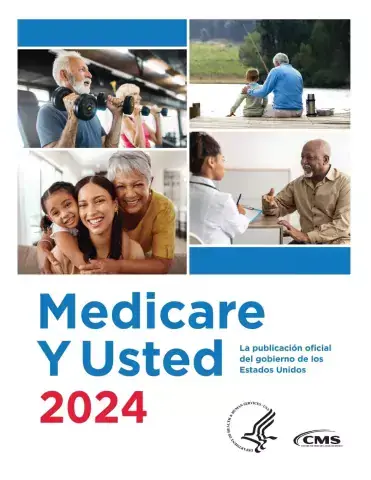Make Informed Healthcare Decisions
Here at Beebe Healthcare, we understand that medical costs can be very confusing. We believe it’s important to make information on hospital costs available to help patients make informed healthcare decisions.
Watch the one minute video, "Understanding Medical Costs," which defines hospital charges and billing to payers.
Additional Resources
Select your insurance carrier from the links below to help you understand your coverage. In some cases, your insurance provider's website will offer a payment estimator which can give you a better understanding of your costs. If your insurance carrier is not listed, you may find it helpful to go to their site and search for a payment estimator to help you. After you click the link to your insurance provider's site, you may need to register for a personal account to lookup your coverage.
CMS/Medicare Procedure Price Look Up Tool
Understanding Healthcare Prices
Comprensión de los precios de la salud
Maryland Hospital Rate Setting – Maryland is an all payer model state. The rates Maryland hospitals charge all payers are based on costs and all payers pay a percentage of those costs. Delaware and Maryland rates are not comparable, Delaware must negotiate rates with each private payer, Medicaid, and Medicare.
Learn About Medical Costs
The Centers for Medicare and Medicaid requires that all hospitals publish their chargemaster, which is the comprehensive list of charges for services and items.
Click the ‘PRICE TRANSPARENCY’ link below to access a portal which lists our standard charges and shoppable services. A shoppable service is a service that can be scheduled by a healthcare consumer in advance. Such services are routinely provided in non-urgent situations that do not require immediate action or attention to the patient, thus allowing patients to price shop and schedule a service at a time that is convenient for them. Examples of common shoppable services, include imaging and laboratory services, medical and surgical procedures, and outpatient clinic visits.
The Price Transparency tool utilizes a 12-month span of payor data from the prior fiscal year and may not reflect subsequent annual price changes. Pricing data may not be available if a service under a specific payor was not performed within that 12-month period. Additional pricing data is available in the chargemaster, which is included in the standard charges machine-readable file.
The derived contracted rate is the average negotiated rate of all payers.
Prices listed are line items and not the price you will be charged for a complete procedure. See below for information on how to request a price estimate.
Surgical procedures may include additional procedures along with supplies, medications, lab tests, or other expenses. There may also be radiology, laboratory, pathology, anesthesiology, or other services that contain extra charges not included in our lists. Beebe Medical Group bills for Walk In Clinics.
You may receive a bill from these related healthcare providers, in addition to Beebe Healthcare, in the event they were also involved in your care.
Your Medical Cost Snapshot
The data provided on this site should be viewed as a snapshot only, and should by no means be considered the only source of information for calculating cost of care. This listing is not a helpful tool for patients to comparison shop between hospitals or to estimate what healthcare services are going to cost them out of their own pocket. If you have insurance, you need to consult with your insurance company regarding your coverage and out of pocket expenses as insurance plans vary.
To get a confidential price estimate for a medical service or procedure at Beebe Healthcare, please contact our Patient Financial Services team at (302) 645-3546. The more information you are able to give the counselors, the more accurate your estimate will be.
Before you call, please have the following information:
- A description of the service or procedure you need - as described by your doctor with specifics.
- The diagnosis code (DRG code) for inpatient services or procedures or the procedural code (CPT code) for outpatient services or procedures - available from your doctor.
- Your doctor’s name - who is the physician ordering your service?
- If you are having surgery, who is the surgeon?
The cost estimate of your service or procedure will be based on the information you give the Patient Financial Services representative. Please keep in mind, this is only an estimate and many factors can affect the final actual cost. For example, your medical provider may need to perform more, fewer, or different services or procedures at the time of service.
Thank you for choosing Beebe Healthcare. We look forward to helping make the process easier and more transparent for you.
Observation Services
Patients may be placed as an inpatient admission or under outpatient observation services. This decision is made by your admitting physician and is based on the time in the hospital that you may need to best treat your condition. There is no difference in the care you will receive for an inpatient admission or as an observation status patient, but Medicare or your insurance company use this decision to place you into the appropriate billing category. Inpatient admissions are considered to be inpatient services, and observation services are considered to be outpatient, even though you still are in the hospital. Observation services are generally provided to evaluate your condition and monitor the effects of short-term treatments and complete testing in order to help establish your diagnosis. Observation services rarely exceed 24 hours.
In some situations, you may receive charges for a bed that is observation - you may be put in a room. Extended Recovery is two midnights and is considered outpatient.
When are observation services used?
- For selected conditions likely to respond quickly to treatment.
- For care after ambulatory surgery if you experience a complication that requires monitoring beyond routine post- operative recovery period.
When are observation services NOT to be used?
- When a medically necessary inpatient admission would be more appropriate.
- For the convenience of the patient, physician, or family.
- For routine diagnostic tests or services that are generally provided on an outpatient basis.
Will Medicare or my insurance company cover observation services?
- Observation services are billed and paid as outpatient services. You will be responsible for any outpatient deductible and coinsurance payments.
- Medicare Part B generally does not cover self-administered medications (those you routinely take at home). Medicare decides which medications are considered to be self-administered. Your hospital stay may be changed from an inpatient to outpatient if it is determined that your time in the hospital does not meet inpatient criteria. You will be notified in writing if this occurs. This form is called a Code 44.
What happens if I become an inpatient admission?
- When the hospital believes that Medicare will not pay for your admission or continued stay at the hospital, you will receive a letter called HINN or Hospital Issued Notices of Noncoverage.
- If your physician decides that your condition should be treated as an inpatient admission instead of receiving observation services, your entire hospital stay will be considered inpatient even though you started your hospitalization under outpatient observation services. You will be responsible for any applicable inpatient deductible and coinsurance.
Your Rights and Protections Against Surprise Medical Bills
When you get emergency care or are treated by an out-of-network provider at an in-network hospital or ambulatory surgical center, you are protected from balance billing. In these cases, you shouldn’t be charged more than your plan’s copayments, coinsurance and/or deductible.
What is “balance billing” (sometimes called “surprise billing”)?
When you see a doctor or other health care provider, you may owe certain out-of-pocket costs, like a copayment, coinsurance, or deductible. You may have additional costs or have to pay the entire bill if you see a provider or visit a health care facility that isn’t in your health plan’s network. “Out-of-network” means providers and facilities that haven’t signed a contract with your health plan to provide services.
Out-of-network providers may be allowed to bill you for the difference between what your plan pays and the full amount charged for a service. This is called “balance billing.” This amount is likely more than in-network costs for the same service and might not count toward your plan’s deductible or annual out-of-pocket limit.
“Surprise billing” is an unexpected balance bill. This can happen when you can’t control who is involved in your care—like when you have an emergency or when you schedule a visit at an in-network facility but are unexpectedly treated by an out-of-network provider. Surprise medical bills could cost thousands of dollars depending on the procedure or service.
What services are protected from balance billing?
Emergency Services: If you have an emergency medical condition and get emergency services from an out-of-network provider or facility, the most they can bill you is your plan’s in-network cost-sharing amount (such as copayments, coinsurance, and deductibles). You can’t be balance billed for these emergency services. This includes services you may get after you’re in stable condition, unless you give written consent and give up your protections not to be balanced billed for these post-stabilization services
Certain services at an in-network hospital or ambulatory surgical center: When you get services from an in-network hospital or ambulatory surgical center, certain providers there may be out-of-network. In these cases, the most those providers can bill you is your plan’s in-network cost-sharing amount. This applies to emergency medicine, anesthesia, pathology, radiology, laboratory, neonatology, assistant surgeon, hospitalist, or intensivist services. These providers can’t balance bill you and may not ask you to give up your protections not to be balance billed.
If you get other types of services at these in-network facilities, out-of-network providers can’t balance bill you, unless you give written consent and give up your protections. You’re never required to give up your protections from balance billing. You also aren’t required to get out-of-network care. You can choose a provider or facility in your plan’s network.
When balance billing isn’t allowed, you also have these protections:
You’re only responsible for paying your share of the cost (like the copayments, coinsurance, and deductible that you would pay if the provider or facility was in-network). Your health plan will pay any additional costs to out-of-network providers and facilities directly.
Generally, your health plan must:
- Cover emergency services without requiring you to get approval for services in advance (also known as “prior authorization”).
- Cover emergency services by out-of-network providers.
- Base what you owe the provider or facility (cost-sharing) on what it would pay an in-network provider or facility and show that amount in your explanation of benefits.
- Count any amount you pay for emergency services or out-of-network services toward your in-network deductible and out-of-pocket limit.
If you think you’ve been wrongly billed, the federal phone number for information and complaints is: 1-800-985-3059.
Visit www.cms.gov/nosurprises/consumers for more information about your rights under federal law.


